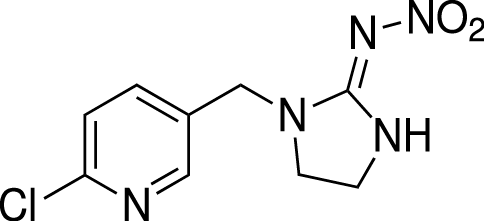Effects of neonicotinoids on ants
In the recent Focus paper “Unintentional effects of neonicotinoids in ants (Hymenoptera: Formicidae)”, Daniel Schläppi, Nathalie Stroeymeyt, and Peter Neumann review the effects of neonicotinoids on non-target ants and highlight that effects are alarming with possibly far-reaching consequences. Importantly, although environmental neonicotinoid concentrations are often low, they may induce adverse sub-lethal effects on non-target ant species. Here, Tristan Kubik and Felicity Muth highlight the main points.
A View by Tristan Kubik
with initial comments from Felicity Muth

The prolific use of human-made chemicals that control insects is unprecedented, but not without reason. Insects represent our biggest competitors for food, some of the most damaging invasive species, and can also be irksome houseguests. In efforts to control insects and the damage they cause to our crops, homes, and health, we have developed pesticides based on natural neurotoxins found in plants. One of the most common groups of these synthetic plant neurotoxins is known as neonicotinoids.
Neonicotinoids are not too chemically different from nicotine, a drug familiar to many. In fact, nicotine and neonicotinoids work in a similar way on all animal nervous systems. In high enough concentrations, they jam the natural gateways of the nervous system. The result is paralysis, inhibited coordination and problem solving, and a whole suite of other body functions related to brains and nerves. Because these chemicals work on nervous systems of all animals, they often impact not only the pests they were originally intended for but also other insects that encounter them. This is certainly true of beneficial, native ants as it is many other beneficial and ecologically important insects.

So how do these pesticides affect individual ants and colonies? Most obviously, these insecticides can kill beneficial ants just as easily as detrimental ones. After all, this is what they were designed to do. But it is important to remember that these chemicals act on the nervous system, and that even a small amount, a so-called “sub-lethal dose”, can still impact beneficial ants in big ways. Imagine having a hangover, mild paralysis, and muscle spasms. Next, imagine trying to pass a sobriety test while experiencing all these symptoms. This is essentially what ant workers are up against when exposed to these sub-lethal doses of neurotoxic chemicals. And this already has been shown to have complicated and unforeseen consequences for workers of beneficial ant species.
Workers “drugged” with these neonicotinoids cannot forage properly, experience greater difficulty grooming themselves and their nestmates, and begin to lose the coordination required for excavating and expanding nests. Ant colonies whose workers cannot forage properly experience downticks in the net amount of food that is brought in daily. This can stress a colony. Imagine having a household running out of food but none of its members are coordinated enough to retrieve more. Imagine also lacking the coordination to properly bathe and clean yourself. It does not take a very large leap of the imagination to see how poor cleaning can lead to illness. This is exactly what happens in ant colonies. Workers that cannot groom themselves or each other properly have heavier loads of infectious ant-eating fungi. Scary stuff.
Of course, as individual ants suffer, individual colonies suffer, and as individual colonies suffer, entire ecosystems can start to feel the pinch. Importantly, the side effects of sub-lethal doses of neonicotinoids on ants can interfere with predator-prey relationships. Nearly all ant species are insect predators, but as predators and prey become drugged by residual neonicotinoids in the environment, these relationships can go awry. Imagine a lethargic lion chasing after fully alert antelopes. In some cases, prey species can escape ant predation simply because the ants are too intoxicated to hunt effectively. This can lead to huge spikes in prey item populations, which is bad news, especially for farmers. In other cases, prey animals can be the ones intoxicated, making them easy picking for ant predators. It seems good for the ants, but in this case, the ants are merely poisoning themselves by taking advantage of their poisoned prey. In a last instance of neonicotinoids interfering with ant ecology, they can affect ant species differently. If two competing ant species encounter environmental neurotoxins, but one species is more susceptible, then what was previously a delicate balancing act can quickly fall apart as one species ruthlessly conquers the other. There are likely many other ways in which neonicotinoids can interrupt the daily goings-on of ant colonies and the ecosystems they carry on their backs. More research will always be required to shed light on these effects.
In an age where neonicotinoid pesticides are so critical to continue to feed our growing population, we must not forget that food is just one of the pillars our species’ existence stands on. Let us not neglect our impacts on the humble native ants. We depend on the healthy ecosystems they prop up all around us. As we wield the might of our ingenious chemical control measures, we must wield with equal enthusiasm responsibility and understanding of their unintended consequences. Indeed, with such great knowledge and power comes an equally great responsibility to our planet, the distant relatives we share it with, and the future generations of ants and humans depending on us to provide them a habitable home.





A very fresh and informative review of a rather important but less well written article. Great review!!!